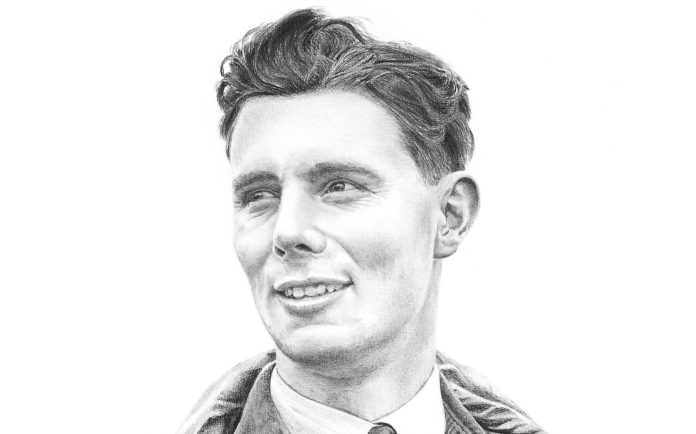Squadron Chief Bob Cowper, who has died aged 93, is assumed to have been the final surviving Australian fighter “ace” of the Second World Struggle; flying evening fighters, he was credited with destroying at the very least six enemy plane.
Throughout the air operations to assist the Allied landings in Normandy in June 1944, Cowper and his colleagues of No 456 Squadron RAAF, mounted standing patrols over the beachhead and in a number of days accounted for 35 enemy plane. On the evening of June 9/10 Cowper and his navigator, Flying Officer William Watson, have been on patrol close to Cherbourg once they attacked a Heinkel 177 bomber and broken it so severely it was pressured to crash land. Later within the sortie, they intercepted a Dornier Do 217 bomber and destroyed it close to Beaumont.
A couple of days later Watson picked up a contact on his radar and homed their Mosquito on to a Junkers 88 bomber. He opened hearth and hit the port engine, which quickly caught hearth, forcing the crew to bale out. The Cowper/Watson staff achieved their fourth success on the evening of July 4/5. They recognized a Heinkel 177 attacking enemy transport south of Selsey Invoice and shot it down into the ocean.
Later in July the squadron was tasked to assault incoming V-1 flying bombs launched from the Pas de Calais area and claimed the destruction of 24 of them. Cowper claimed one however it was later credited to an anti-aircraft battery. In February 1945 he was awarded a Bar to an earlier DFC and Watson was awarded the DFC.
Robert Barson Cowper was born on June 24 1922 at Damaged Hill, NSW, earlier than his household moved to South Australia. He attended Queen’s Faculty in Adelaide earlier than working as an engineering draughtsman. In 1940, on his 18th birthday, he joined the RAAF. He accomplished his coaching in Canada and arrived in Scotland in September 1941. He educated as an evening fighter pilot and in November joined No 153 Squadron in Northern Eire. The squadron was changing its previous Defiant plane with the highly effective Beaufighter when he teamed up with Watson.
After nearly a 12 months flying patrols over the Irish Sea, Cowper and Watson have been posted to the Center East. They ferried a brand new Beaufighter to Gibraltar however on the onward flight to Malta grew to become misplaced. Operating out of gasoline Cowper crash landed behind enemy traces within the desert at evening. Arab nomads sheltered them till they have been picked up by a British armoured patrol. Their adventures entitled them to affix the “Late Arrival’s Membership”.
They joined No 89 Squadron primarily based in Malta and flew interdiction raids over northern Sicily and attacked trains with bombs. In March 1943, they transferred to No 108 Squadron and a month later had their first fight within the area. They have been engaged in an extended duel with a German evening fighter off the west coast of Sicily. Cowper’s hearth broken the Messerschmitt 210 and it disappeared into cloud. The invasion of Sicily, Operation Husky, was mounted on the evening of July 9/10 and two nights later the crew engaged a Junkers 88 that was attacking Allied transport. Cowper opened hearth and the enemy bomber exploded, showering the Beaufighter with particles.
The evening fighter was badly broken and the navigator (a stand in for Watson) baled out by no means to be seen once more. Cowper had nice problem leaving the stricken Beaufighter. He misplaced consciousness however got here to as he fell and pulled the ripcord of his parachute touchdown within the sea moments later. With deep cuts, a damaged nostril and bruising he waited till daybreak to fireside his misery flare when he was noticed and picked up by a naval vessel. His experiences entitled him to affix the Caterpillar Membership and the Goldfish Membership giving him the uncommon distinction of membership of the trio of survival golf equipment.
Regardless of his wounds he was flying once more a number of weeks later and he and Watson destroyed a Junkers 88 off Sicily. By mid-August his tour was over and he was awarded the DFC for his “nice braveness and willpower”.
After a interval as a night-fighter teacher, throughout which he met and married an Australian WAAF, he joined No 456 Squadron in March 1944 when Watson, who had additionally been on a relaxation tour, rejoined him.
In March 1945 the squadron re-equipped with a extra highly effective Mosquito and from an airfield in Essex offered assist for bombing raids over southern German. By the top of the struggle, Cowper was the appearing squadron commander of No 456, the one Australian evening fighter squadron.
After the struggle, he and his younger household returned to Australia the place he labored for Dunlop earlier than proudly owning a service station. He later grew to become a farmer and racehorse proprietor.
He labored tirelessly to attain recognition of No 456 Squadron’s struggle document and was instrumental in having the squadron’s brand adopted because the official badge. In September 2008 this was laid in a slate tile within the flooring of the RAF’s church of St Clement Danes within the Strand. In 2004 he was appointed to the Légion d’Honneur for companies through the Liberation of France and in 2010 acquired the Medal of the Order of Australia. In 2007 he printed his autobiography, Chasing Shadows.
Bob Cowper married Katherine McCall in December 1943; she died in 2014 and two of their 4 daughters survive him.
Squadron Chief Bob Cowper, born June 24 1922, died June 21 2016














